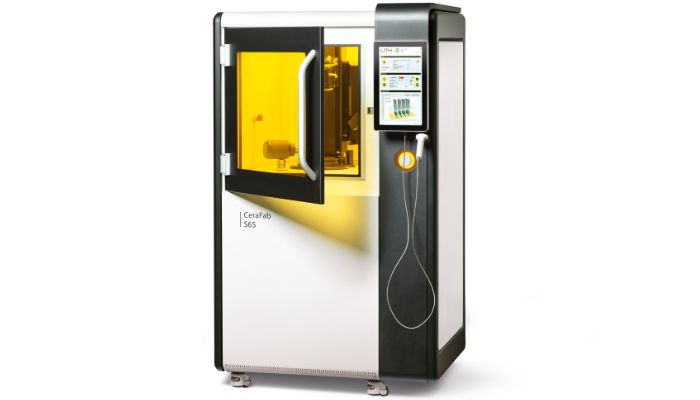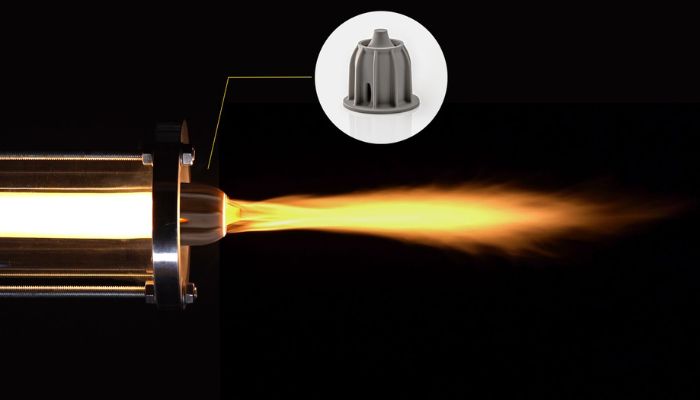Silicon Nitride: The High-Performance Ceramic for Extreme Conditions – From the Human Body to Outer Space
Higher, further, faster – these are not only the demands placed on modern society, but also science, industries, applications and technology. Whether in the automotive, aerospace or medical sectors, the general aim is to push boundaries, expand existing possibilities and increase efficiency. But to serve these fields, high-performance materials are needed that meet the requirements of these applications and performance is still primarily associated with metals. However, when it comes to harsh and demanding environments, metals quickly reach their natural limits, necessitating alternative materials. Thanks to their powerful and unique properties, ceramics are very suitable as an alternative. High-performance ceramics have outstanding properties for use in demanding conditions and in combination with additive manufacturing, unlock a wide range of possible applications in extreme environments – from the human body to industry and outer space. One such high-performance ceramic is silicon nitride, the applications of which we will examine in more detail to illustrate the potential of ceramic materials.
First, it is important to understand why ceramics are used for high-performance applications – namely, due to their excellent material properties. Ceramics are very hard, as well as having significant abrasion and heat resistance. They offer high mechanical and dimensional stability, even at very high temperatures. These characteristics make it a very efficient material that shows its advantages where other materials fail.
![]()
Moreover, innovative materials with a wide range of applications and high durability are in demand, especially in fields that are developing ever faster due to research. For this reason, ceramics are increasingly attracting the attention of engineers in these fields. However, a certain technique is also needed to process high-performance ceramics and fully utilize their remarkable properties. Additive manufacturing combines the innovative material properties of ceramics and a previously unachievable level design freedom so that the parts produced excel under extreme conditions.
That said, high-performance ceramics cannot be processed in just any 3D printing process. And Lithoz has emerged as a pioneer in ceramic 3D printing. The company’s LCM process offers a particularly promising solution for high-performance ceramics.
LCM technology can produce geometrically complex ceramic parts with full density and precision. These end parts are stronger than metal parts and have a longer service life. It is also worth mentioning that production can be scaled up using LCM technology and Lithoz has successfully mastered this level of mass production.
Advancing technology and pushing the boundaries of what is possible is one of the company’s principles: “Since our founding, Lithoz has been characterized by one central promise – to always deliver the best possible quality for ceramic 3D printing and to continually push the limits of ceramics development as an active partner to our customers. Behind this promise are our values, which have become the DNA of Lithoz throughout our history,” Lithoz says on their website.

In addition to LCM technology and its printing systems, Lithoz has also made a name for itself with its extensive portfolio of materials. This range of innovative and high-performance materials enables the company to meet the requirements of various industries and further advance the use of ceramics in a variety of sectors. To achieve this, Lithoz also cooperates with various partners and research institutes.
Lithoz’s expertise in ceramic 3D printing supports every aspect of the development of high-performance ceramics and offers cross-industry solutions for the development of new products and production processes. – Professor Alexander Michaelis, Fraunhofer Institute for Ceramic Technologies and Systems IKTS.
When it comes to industries with extreme conditions, one material in particular stands out from the Lithoz range: silicon nitride. Silicon nitride is a high-performance ceramic material that Lithoz markets under the name LithaNit 782. LithaNit 782 is a slurry with a beta-SiAION ceramic base and is characterized by its durability and resistance to temperatures and chemicals.
This strong, tough material is thermally resistant to very high temperatures as well as to acid and alkali corrosion. This makes LithaNit 782 interesting for a wide range of applications where these properties are required. Specific applications include insulators, springs and impellers. To fully illustrate the range of applications, it is worth looking at the two applications on opposite sides of the spectrum: space travel and the relatively small human body.
The Material for Extremes: How Silicon Nitride Is Used in Aerospace and Medicine
Silicon nitride is an interesting material for both aeronautics and space travel, although its material advantages are primarily used in the latter. Aerospace is a dynamic field that is looking for ever more powerful and innovative technologies. Although metals are the conventional material used, they can only withstand the extreme conditions in space to a limited extent and wear out easily. Ceramics, on the other hand, better withstand extreme thermal conditions and, can survive repeated temperature shocks, making them more sustainable in the long term and therefore resulting in less space debris.
Apart from these desirable material properties, 3D-printed parts made of silicon nitride can be flexibly designed to guarantee the optimal function of the component. For example, an aerospike nozzle made of silicon nitride was printed using LCM technology. This nozzle consists of a spike-shaped body that is used to direct the gas flow in a targeted manner. This enables passive pressure adjustment to the ambient air, resulting in ideal exhaust gas conditions. The design of the printed component not only makes it possible for these adjustments to function smoothly, but also ensures optimum cooling within the part. By combining silicon nitride with LCM technology, complex parts can be produced which meet the high demands required for aerospace applications in terms of complexity, performance and impressive efficiency.

One property that has so far gone unmentioned is the biocompatibility of silicon nitride. Although strong, tough and heat-resistant materials are also necessary in medicine, biocompatibility is an indispensable property. In fact, silicon nitride is characterized by its antibacterial and osseointegrative properties, which support bone growth and open up numerous fields of application in medicine. Applications in orthopedics and neurosurgery should be highlighted here. The high-performance ceramic LithaNit 782 has already been used for the production of permanent implants and surgical tools. Another example of the medical use of silicon nitride is spinal cages, which are used to treat herniated discs and are used for surgical spinal fusion.
As these application examples show, high-performance ceramics are a material that can comfortably compete with metals and high-performance polymers in every case and, in some cases, even outperform them. We can expect to see more and more 3D-printed production parts made of ceramics, such as silicon nitride in extreme fields of application in the future. Lithoz lists a wide range of specific examples of the use of LithaNit 782 HERE.
What do you think of LithaNit 782? Let us know in a comment below or on our LinkedIn, Facebook, and Twitter pages! Don’t forget to sign up for our free weekly newsletter here, the latest 3D printing news straight to your inbox! You can also find all our videos on our YouTube channel.
* All Photo Credits: Lithoz GmbH







